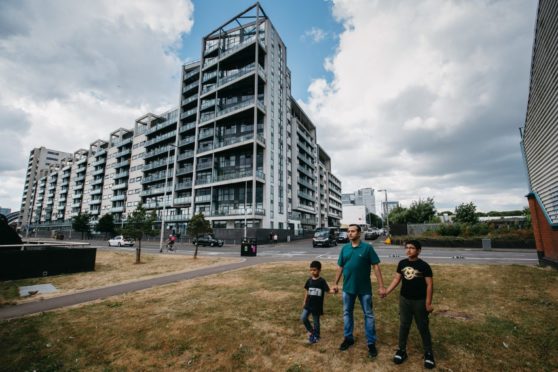
Scottish ministers have been accused of dragging their heels removing Grenfell-style flammable cladding from buildings as the bulk of the removal work is earmarked for 2025.
The Scottish Government’s spending review pledged £180 million over three years to remove the potentially lethal insulation.
The programme, which aims to replace insulation in high-risk buildings which are fitted with aluminium composite material, was initially expected to be rolled out in 2022.
However, the vast majority of funds – £100 million – will be allocated in 2025-26, while a £30 million budget will start in 2023-24, increasing to £50 million in 2024-25.
The danger of wrapping flats in combustible cladding was exposed in 2017 when fire raced up Grenfell Tower in London, killing 72 people.
Scottish Labour housing spokesperson Mark Griffin said: “It beggars belief that the SNP government still don’t seem to grasp the urgency of the situation. After years of needless dither and delay, they have finally accepted that this dangerous cladding needs to go – but they are still dragging their heels making it happen.”
We reported in June how Abhijeet Kadwe had given up and moved his family to a new home due to delays in assessing his building for a cladding fire risk.
More than 100 public buildings, including hospitals and schools, are believed to have the potentially flammable material in Scotland. Fire Brigades Union Scotland executive council member Colin Brown said: “The lack of meaningful progress in removing Grenfell-type cladding from buildings across Scotland more than five years after the disaster is reprehensible and continues to show complacency to the point of contempt for those living, working and being educated in buildings wrapped in these materials, and for the firefighters who would be called to rescue occupiers and extinguish cladding fires.”
Leading fire safety consultant Stephen Mackenzie also expressed concern at the delay.
He said: “It is completely unacceptable. Five years on from Grenfell, people are still living in dangerous buildings. Why can’t the Scottish Government put a crack team together to get this work done so that people are safe in their homes?”
The Scottish Government said: “We are taking priority action to address cladding safety issues, having expanded our Single Building Assessment programme so that more than 100 buildings will be assessed. The vast majority of buildings in the initial phase of our programme have secured fire engineers.
“A new streamlined process for commissioning the assessments will help identify at-risk buildings more quickly. We still expect the vast majority of buildings assessed through this programme to be found to be safe. We have allocated almost £400 million to this.
“We’ve also agreed with some of the country’s largest housing developers to work together to address cladding issues as part of our new Scottish Safer Buildings Accord.”

Enjoy the convenience of having The Sunday Post delivered as a digital ePaper straight to your smartphone, tablet or computer.
Subscribe for only £5.49 a month and enjoy all the benefits of the printed paper as a digital replica.
Subscribe